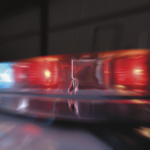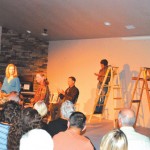How many of us have visited a forest outside of Southern California?
Many of these have amenities very similar to ours: campgrounds, hiking trails, lakes and streams, just to name a few. Most all encourage public use for recreational activities by providing access to many areas through both paved and dirt roads that traverse even the most remote areas.
On a recent trip to Truckee in Northern California, I spent a considerable amount of time exploring the Tahoe National Forest backcountry.
Now this national forest is big. It has some 1.2 million acres and is spread over four counties. Compare this to our San Bernardino National Forest, which is about 818,000 acres over two counties and you see the difference in size between the two.
A couple of things I did notice after a week of enjoying that area was the amount of tree thinning and overgrowth reduction.
Over the years, the Mountain Communities Fire Safe Council continues to have a lot of interaction and discussion with our local U. S. Forest Service staff. One topic is their attempts to do more of this thinning of the forest locally.
The benefit of these projects and the desired results is evident on the TNF. Granted, this forest is in an area that gets more rain than the SBNF, but the entire forest looks a great deal healthier than ours because it is not dense and overgrown.
The other noticeable difference was the lack of litter, not only in the backcountry trails and roads, but also around campgrounds, parking lots, picnic areas and highways. It seemed like visitors and residents in this area respect and are more aware of the surroundings that they are in — unlike the sometimes-careless Southern California crowd.
Think about the last time you may have hiked on the Ernie Maxwell or Deer Springs trails. For vistitors to the Hill, these are probably two of most popular trails around Idyllwild. One could fill a daypack with plastic bottles, wrappers, cigarette butts, trash and the like after a weekend of use from these trails. Then there are those who take their dogs and do not pick up after them. Or, they bag it and leave it by the side of the road or trail. Someone explain this one to me.
The other barometer of a big weekend in our forest is the amount of trash alongside the highway and local roads on a Monday morning. Even the locals are part of this problem. Do you really think that load of cardboard and loose stuff in the back of your truck is all going to stay there on the way to the Transfer Station?
Thanks to the members of the local Rotary and Idyllwild Cycling for adopting a stretch of Highway 243. Throughout the year and generally after holidays, they can be seen doing trash pick up along the roadway.
Another person you may have seen numerous times along the highway is a gentleman on a bicycle with a basket carrying two bags picking up bottles and cans. I’ve always appreciated his gathering of these things and told my lovely wife, “I’m going to buy him lunch someday.” While at the dump I saw him, and we had a short conversation. I found out that he retired, moved here and said, “This was too nice a place to have bottles and cans all over the side of the road.” Thanks for your efforts, Jay.* Hope you enjoyed your lunch.
I think we can all learn something from a visit to another area similar to our community. Our national forests need to be respected and not abused by the public. And with financial support by our federal legislators, the USFS can do the work to maintain and provide a healthy forest that we all can continue to enjoy and live in. Remember, we are all caretakers of the national forests.
Editor’s note: Jay Mulder was a finalist for this year’s Ernie Maxwell Community Spirit Award.










